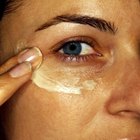A laser is an intense, pulsating beam of light that removes unwanted hair by passing the light beam through the skin. When the light hits the hair follicle, where hair growth originates, the heat destroys the follicle instantly. Used by a reputable, experienced practitioner, laser hair removal is generally safe. There are potential long-term health risks, however, that all patients should be aware of before undertaking the procedure.
Temporary Side Effects
Temporary side effects can include pain during and after the procedure; blistering; itching; numbness; crusting or scabs forming on ingrown hairs; bruising; swelling around the area that was treated; redness, irritation; infection and hyperpigmentation. The latter is temporary darkening of the skin on the treated area. These side effects can last from one day to several months before they disappear completely. If you have tattoos in the area of the body being treated, be aware that darkening can happen with tattoos and discuss this with your doctor before undergoing laser hair removal.
Permanent Side Effects
Potential long-term health risks of laser hair removal are rare, but they do occur. They include the following:
Skin discoloration: Hyperpigmentation refers to the darkening of skin that may occur after the laser hair removal treatment. Hypopigmentation, on the other hand, refers to the lightening of skin that can occur. Like hyperpigmentation, hypopigmentation happens more often in patients with darker skin. While hyperpigmentation is usually reversible, hypopigmentation is not, causing a permanent lightening of the skin on the treated area. Patients who lack a strong contrast between skin tone and hair color are more likely to experience permanent side effects.
Burns and scarring: Scars can occur when the area is treated by someone who is minimally trained or by an accidental over-treatment. If the laser is set at levels much higher than it should be, it can result in burns and blisters on the skin, which eventually become lasting scars. Burns occur more frequently on patients with darker skin, since skin with darker pigment absorbs the laser more readily. While most instances of laser hair removal burns are mild, there have been a number of severe burn cases.
Sweat and oil glands: Because studies have shown laser hair removal can alter skin structures such as sweat and oil glands, they may cause lasting changes to the skin in some people, especially if burns are involved.
Ways to Minimize Risks
Before starting a complete laser hair removal process, a sample should be done on a test area. After waiting a couple of days, the hair removal practitioner will determine if any rare or long-term side effects can be expected. Let your practitioner know if you have any form of the herpes virus in the area you intend to treat (for people with herpes, laser treatment can trigger an outbreak, so an antiviral medication may be given beforehand). If you have a history of abnormal scarring, you should mention it to the practitioner before treatment.
Avoid tanning or unprotected sun exposure for several weeks prior to your procedure. Results are best and side effects less likely if patients are at their lightest skin tone for the treatment. Your practitioner can prescribe a bleaching cream for you to apply before treatment. You should avoid waxing or plucking the area for several weeks or even months prior for best results. Take any antibiotic or antiviral medications that may be prescribed to you and make certain the area is clean on the day of the procedure.
If swelling or pain occurs afterward, take an analgesic such as aspirin or ibuprofen and use ice packs. An anesthetic cream may be applied to the skin prior to treatment to prevent pain. However, the U.S. Food and Drug Administration has issued a health bulletin warning against potential dangers of anesthetic creams, as a few deaths have occurred from overuse of these creams prior to laser hair removal.
Since there are no standards for the licensing of laser hair removal technicians, make sure the clinic you visit features the latest hair removal systems. Avoid those who advertise laser hair removal prices which seem too good to be true, often an indication of lower-than-average quality.
Related Articles

Fraxel Laser Treatment Dangers

How do I Speed Up the Reversal of Face ...

Photofacial Vs. Microdermabrasion

The Best Facial Moisturizers for People ...

How to Remove an Eyebrow Tattoo

How to Stop a Mustache From Growing for ...

What Are the Dangers of Fraxel Repair?

Possible Side Effects of Obagi

The Best Skin Treatment for Melasma

The Difference Between Retin A & Renova

Black Pepper Oil for Vitiligo

Laser Treatment for Face Wrinkles

Fraxel Repair Vs. Restore Results

Home Remedies to Permanently Remove ...

How to Get Rid of Pink Scars

How to Treat Hematoma & Swelling After ...

How to Stop Stubble Itch

What Is the Initial Breakout From ...

How to Treat Burns From Cream Hair ...

Magna Rx Side Effects
References
Writer Bio
Bonnie Singleton has been writing professionally since 1996. She has written for various newspapers and magazines including "The Washington Times" and "Woman's World." She also wrote for the BBC-TV news magazine "From Washington" and worked for Discovery Channel online for more than a decade. Singleton holds a master's degree in musicology from Florida State University and is a member of the American Independent Writers.